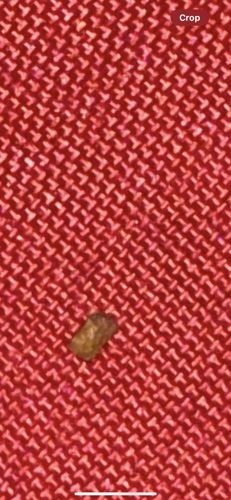Household Casebearer Moth
Scientific Name: Phereoeca uterella
Order & Family: Lepidoptera, Tineidae
Size: Larval case: 10-15 mm (0.4-0.6 inches) in length; Adult moth wingspan: 9-16 mm (0.35-0.63 inches)

Natural Habitat
Indoors, especially in humid environments like bathrooms, attics, and basements. They prefer dark, undisturbed areas where they can find food sources.
Diet & Feeding
Larvae feed on natural fibers like wool, felt, silk, and sometimes cotton, as well as spiderwebs, dead insects, and detritus in dark, undisturbed areas.
Behavior Patterns
Larvae construct silken cases and attach debris to them. They can be found crawling on surfaces, carrying their cases. Adults are typically short-lived and do not feed. They are attracted to lights.
Risks & Benefits
Potential risks include damage to textiles, clothing, carpets, and other natural fiber products. Generally, they are considered pests. No significant benefits to humans are known; in nature, they contribute to decomposition.
Identified on: 8/30/2025